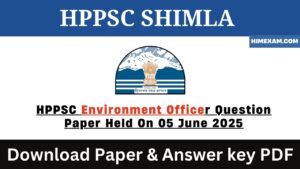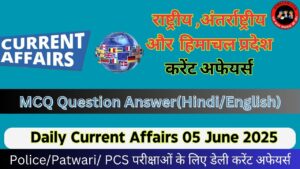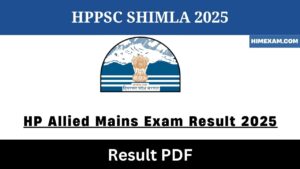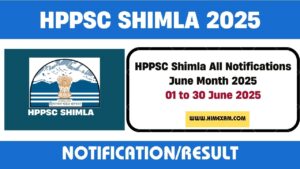Constitution Development of India MCQ Question Answer In English
||Constitution Development of India MCQ Question Answer In English||Constitution Development of India Question Answer In English||
1. In which year Regulating Act was passed?
(A) 1753
(B) 1757
(C) 1764
(D) 1773
2. In which of the following Acts for the first time provision was made for the post of Governor-General of Bengal?
(A) Regulating Act, 1773
(B) Pitt’s Indian Act, 1784
(C) Charter Act of 1813
(D) Act of 1833
3. The Regulating Act was passed in
(A) 1773
(B) 1774
(C) 1785
(D) 1793
4. In which year was the Regulation Act passed?
(A) 1757 A.D.
(B) 1765 A.D.
(C) 1773 A.D.
(D) 1793 A.D.
5. Under the provision of Regulating Act, a Provincial Assembly for Bihar was set up in
(A) 1772
(B) 1774
(C) 1776
(D) 1778
6. The Supreme Court was set up for the first time in India under the
(A) Regulating Act, 1773
(B) Charter Act, 1853
(C) Government of India Act, 1935
(D) Indian Constitution Act, 1950
7. Supreme Court of Kolkata started in India was introduced by the Act of
(A) 1773 Act
(B) 1909 Act
(C) 1919 Act
(D) 1858 Act
8. The first Chief Justice of Supreme Court established by the East India Company was
(A) Elijah Impey
(B) Courtney Ilbert
(C) Phillip Francis
(D) None of the above
9. Which Act gave the right to reject the decision of the committee to Governor-General?
(A) Regulating Act of 1773
(B) Pitt’s India Act of 1784
(C) Act of 1786
(D) Act of 1813
10. Which of the following Acts empowered Lord Cornwallis to overrule the decision of his Council?
(A) Regulating Act
(B) Act of 1786
(C) Charter Act of 1793
(D) Charter Act of 1813
||Constitution Development of India MCQ Question Answer In English||Constitution Development of India Question Answer In English||
11. By a Regulation in 1793, the District Collector was deprived of his judicial powers and made the collecting agent only. What was the reason for such regulation?
(A) Lord Cornwallis felt that the District Collector’s efficiency of revenue collection would enormously increase without the burden of other work
(B) Lord Cornwallis felt that judicial power should compulsorily be in the hands of Europeans. While Indians can be given the job of revenue collection in the districts
(C) Lord Cornwallis was alarmed at the extent of power concentrated in the District Collector and felt that such absolute power was undesirable in one person
(D) The judicial work demanded a deep knowledge of India and a good training in law and Lord Cornwallis felt that District Collector should be only a revenue collector
12. The monopoly of the East India Company in India’s trade was abolished in
(A) 1793
(B) 1803
(C) 1813
(D) 1833
13. Which of the following is one of the reasons for considering Charter Act of 1813 important for India?
(A) It banned propaganda by Christian Missionaries in India
(B) It emphasised industrialisation in India
(C) It made a financial allocation for the education of Indian people
(D) It approved the development of a railway system in India
14. Which one of the following provisions was not made in the Charter Act of 1833?
(A) The trading activities of the East India Company were to be abolished
(B) The designation of the supreme authority was to be changed as the Governor General of Indiain-Council
(C) All law-making powers to be conferred on GovernorGeneral-in-council
(D) An Indian was to be appointed as a Law Member of the Governor-General’s Council
15. Which of among following had recommended to hold the Indian Civil Service Examination simultaneously in India and England?
(A) Aitchison Commission
(B) Hobhouse Commission
(C) Montagu-Chelmsford Report
(D) Lord Cornwallis
16. Which Act provisioned competitive exam system for Civil Services?
(A) 1833
(B) 1853
(C) 1858
(D) 1882
17. Which of the following Acts for the first time created a functioning Legislature Council in India?
(A) Charter Act of 1793
(B) Charter Act of 1813
(C) Charter Act of 1853
(D) Charter Act of 1833
18. In which of the following years British Government finally agreed to hold the Indian Civil Services (I.C.S.) examination simultaneously in India and England?
(A) 1922
(B) 1923
(C) 1924
(D) 1925
19. Under which Act, Board of control was established?
(A) Regulating Act, 1773
(B) Settlement Act, 1781
(C) Charter Act, 1813
(D) Pitt’s India Act, 1784
20. By which Act British Govt. abolished the monopoly of East India Company on trading of sugar and China?
(A) Regulating Act, 1773
(B) Pitt’s India Act, 1784
(C) Charter Act, 1813
(D) Charter Act, 1833
21. British East India Company lost the monopoly of Tea trade by
(A) The Charter Act of 1793
(B) The Charter Act of 1813
(C) The Charter Act of 1833
(D) The Charter Act of 1853
22. Which of the following Acts transferred the Government of India from East India Company to the Crown?
(A) Charter Act, 1833
(B) Charter Act, 1853
(C) The Government of India Act, 1858
(D) Indian Council Act, 1861
23. Consider the following statements.
1. The Charter Act, 1853 abolished East India Company monopoly of Indian trade.
2. Under the Government of India Act, 1858 the British Parliament abolished the East India Company altogether and undertook the responsibility of ruling India directly
. Which of the statement(s) given above is/are correct?
(A) Only 1
(B) Only 2
(C) Both 1 and 2
(D) Neither 1 nor 2
24. Which one of the following Acts empowered the Governor General of India to issue Ordinances?
(A) Charter Act of 1833
(B) Indian Council Act of 1861
(C) Indian Council Act of 1892
(D) Indian Council Act of 1909
25. Which one of the following Acts of British India strengthened the Viceroy’s authority over his executive council by substituting ‘portfolio’ or departmental system for corporate functioning?
(A) Indian Council Act, 1861
(B) Government of India Act, 1858
(C) Indian Council Act, 1892
(D) Indian Council Act, 1909
26. Which of the following act empowered Indian legislative assembly to make discussions on a budget?
(A) Indian Council Act, 1861
(B) Indian Council Act, 1892
(C) Indian Council Act, 1909
(D) Indian Administration Act, 1919
27. By which of the following Acts, the British for the first time introduced the system of indirect elections in India?
(A) 1909
(B) 1861
(C) 1867
(D) 1892
28. To control the media in India, ‘Acts’ were passed in
(A) 1835, 1867, 1878, 1908
(B) 1854, 1864, 1872, 1910
(C) 1854, 1872, 1908, 1910
(D) 1867, 1908, 1910, 1919
29. When were High Courts established in Bombay, Madras and Calcutta?
(A) 1861
(B) 1851
(C) 1871
(D) 1881
||Constitution Development of India MCQ Question Answer In English||Constitution Development of India Question Answer In English||
30. The most short-lived of all of Britain’s constitutional experiments in India was
(A) The Indian Council Act of 1861
(B) Indian Council Act of 1892
(C) Indian Council Act of 1909
(D) Government of India Act of 1919
31. The declaration of reforms on 20 August, 1917 is known as
(A) Montagu Declaration
(B) Morely Declaration
(C) Minto Declaration
(D) Chelmsford Declaration
32. The Montagu-Chelmsford Report formed the basis of
(A) the Indian Council Act, 1909
(B) the Government of India Act, 1919
(C) the Government of India Act, 1935
(D) the Indian Independence Act, 1947
33. In which Constitutional document Dyarchy System was introduced in Indian provinces?
(A) 1892
(B) 1909
(C) 1919
(D) 1935
34. The Montagu-Chelmsford Proposals were related to
(A) Social reforms
(B) Educational reforms
(C) Reforms in police https://himexam.com/wp-content/uploads/2021/12/Madhya-Pradesh-MP-PEB-Group-2-Sub-Group-4-Various-Post-Answer-Key-2021.jpgistration
(D) Constitutional reforms
35. The Government of India Act of 1919 is clearly defined
(A) the separation of power between the Judiciary and the Legislature
(B) the jurisdiction of the Central and Provincial Governments
(C) the powers of the Secretary of State for India and the Viceroy
(D) None of the above
36. The principle of Dyarchy was introduced by the Act of
(A) 1861
(B) 1892
(C) 1909
(D) 1919
37. Identify the incorrect statement about Government of India Act 1919
(A) This Act is also known as Morley-Minto Reforms Act.
(B) This Act separated the Central and Provincial subjects.
(C) The Government of India Act 1919 came into force in 1921.
(D) Montague was the Secretary of State for India and Lord Chelmsford was the Viceroy of India
38. Which of the following report was baseline of the Government of India Act, 1935?
(A) The Cabinet Mission
(B) The Cripps Mission
(C) The Rowlatt Commission
(D) The Simon Commission
39. Consider the following statements: Some of the main features of the Government of India Act, 1935 were the
1. Abolition of diarchy in the Governor’s provinces.
2. The power of the Governors to veto legislative action and to legislate on their own.
3. Abolition of the principle of communal representation.
Which of the statements given above is/are correct?
(A) Only 1
(B) 1 and 2
(C) 2 and 3
(D) 1, 2 and 3
40. Government of India Act, 1935 abolished
(A) Provincial autonomy
(B) Provincial diarchy
(C) Federal structure of India
(D) Responsible Central Government
||Constitution Development of India MCQ Question Answer In English||Constitution Development of India Question Answer In English||
41. Why Government of India Act, 1935 is important?
(A) It is a main source of the Indian Constitution
(B) By this India got freedom
(C) Division of India is described in it
(D) End of the princely States by this
42. Which one of the following is not a feature of the Government of India Act of 1935?
(A) Diarchy at the Centre as well as in the Provinces
(B) A bicameral Legislature
(C) Provincial Autonomy
(D) An All India Federation
43. The real intention of the British to include the Princely States in the Federal Union proposed by the India Act of 1935 was to
(A) Exercise more and direct political and https://himexam.com/wp-content/uploads/2021/12/Madhya-Pradesh-MP-PEB-Group-2-Sub-Group-4-Various-Post-Answer-Key-2021.jpgistrative
(B) Involve the princes actively in the https://himexam.com/wp-content/uploads/2021/12/Madhya-Pradesh-MP-PEB-Group-2-Sub-Group-4-Various-Post-Answer-Key-2021.jpgistration of the colony
(C) Finally effect the complete political and https://himexam.com/wp-content/uploads/2021/12/Madhya-Pradesh-MP-PEB-Group-2-Sub-Group-4-Various-Post-Answer-Key-2021.jpgistrative take over of all the princely States by the British
(D) Use the princes to counterbalance the anti-imperialist doctrines of the nationalist leaders
44. Who among the following said about the Act of 1935 ‘a car which has a brake but no engine’?
(A) Jawaharlal Nehru
(B) C. Rajagopalachari
(C) Mahatma Gandhi
(D) S.C. Bose
45. In which session, Indian National Congress had rejected Government of India Act, 1935?
(A) Ramgarh Session, 1940
(B) Lucknow Session, 1936
(C) Faizpur Session
(D) None of the above
46. Who amongst the following had called the Government of India Act, 1935 as the ‘Charter of Slavery’?
(A) Jawaharlal Nehru
(B) M.A. Jinnah
(C) Dr. Rajendra Prasad
(D) Maulana Abul Kalam Azad
47. The ‘Instrumentation of Instructions’ contained in the Government of India Act, 1935 have been incorporated in the Constitution of India in the year 1950 as
(A) Fundamental Rights
(B) Directive Principles of State Policy
(C) Extent of Executive Power of State
(D) Conduct of Business of the Government of India
48. Who has said it, “I have not to beg pardon in connection with the allegation that in the draft of the Constitution, a major part of the Government of India Act, 1935, has again been reproduced”?
(A) Dr. Rajendra Prasad
(B) Sardar Patel
(C) Jawaharlal Nehru
(D) Dr. B.R. Ambedkar
49. Consider the following statements. In Government of India Act, 1935 provided for
1. The provincial autonomy.
2. The establishment of Federal Court.
3. All India Federation at the Centre.
Which of the following statement given above are correct?
Code
(A) 1 and 2
(B) 2 and 3
(C) 1 and 3
(D) 1, 2 and 3
50. Match List-I with List-II and select the correct answer using the code given below the lists.
List-I
(a) Establishment of Board of Control
(b) Establishment of Supreme Court
(c) Permission of appointment of Christian Missionaries in India
(d) Law Member in Governor General Council
List-II
1. Regulating Act, 1773
2. Pitt’s India Act, 1784
3. Charter Act, 1813
4. Charter Act, 1833
Code (a) (b) (c) (d)
(A) 1 2 3 4
(B) 2 1 3 4
(C) 1 2 4 3
(D) 2 4 1 3
51. Match List-I (Acts of colonial Government of India) with List-II (Provisions) and select the correct answer using the code given below the lists.
List-I (Acts of Colonial Government of India)
(a) Charter Act, 1813
(b) Regulating Act, 1773
(c) Act of 1858
(d) Pitt’s India Act, 1784
List-II (Provisions)
1. Set up a Board of Control in Britain to fully regulate the East India.
2. Company’s trade monopoly in India was ended.
3. The power to govern was transferred from the East India Company to the British Crown.
4. The Company’s directors were asked to present to the British Government all correspondence and documents pertaining to the https://himexam.com/wp-content/uploads/2021/12/Madhya-Pradesh-MP-PEB-Group-2-Sub-Group-4-Various-Post-Answer-Key-2021.jpgistration of the company.
Code (a) (b) (c) (d)
(A) 2 4 3 1
(B) 1 3 4 2
(C) 2 3 4 1
(D) 1 4 3 2
||Constitution Development of India MCQ Question Answer In English||Constitution Development of India Question Answer In English||
Answer Sheet 1. (D) 2. (A) 3. (A) 4. (C) 5. (B) 6. (A) 7. (A) 8. (A) 9. (C) 10. (B) 11. (C) 12. (C) 13. (C) 14. (D) 15. (C) 16. (B) 17. (C) 18. (A) 19. (D) 20. (D) 21. (C) 22. (C) 23. (B) 24. (B) 25. (A) 26. (B) 27. (D) 28. (A) 29. (A) 30. (C) 31. (A) 32. (B) 33. (C) 34. (D) 35. (B) 36. (D) 37. (A) 38. (D) 39. (B) 40. (B) 41. (A) 42. (A) 43. (D) 44. (A) 45. (B) 46. (A) 47. (B) 48. (D) 49. (D) 50. (B) 51. (A)
Read More: – Himachal Pradesh General Knowledge

%20MCQ%20Question%20Answer%20In%20English%20(8).png)







